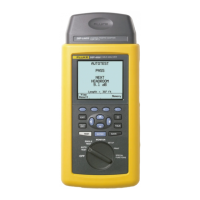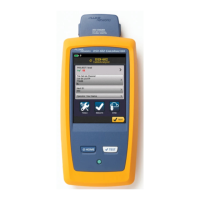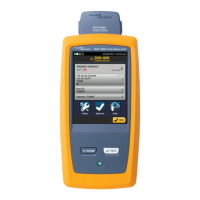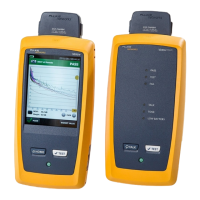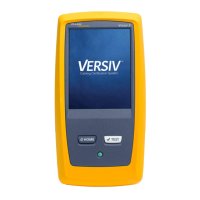Running Individual Tests
The HDTDR Test
4
4-9
The HDTDR Test
The HDTDR (High-Definition Time Domain Reflectometry) test helps you
locate sources of return loss on cabling by reporting the locations of signal
reflections caused by impedance anomalies. The test is run from both ends of the
cabling (if the remote is used) for improved visibility of far-end anomalies.
The test locates anomalies caused by problems such as shorts, opens, poor
connections, and mismatches in cable types. You can view the location and size of
the anomalies in a list or plot format.
The reflection values displayed are adjusted to compensate for cable attenuation.
The values represent the approximate size of the reflections as they appear at the
anomalies.
The HDTDR test uses very short (2 ns) test pulses, which help the test tool resolve
smaller anomalies, resulting in more accurate distance-to-fault measurements and
better definition of faults on plots.
How to Terminate the Cable
You can run the HDTDR test on twisted pair cable with or without a remote unit,
and on coaxial cable with or without a terminator. Table 4-3 describes how
termination devices affect the results reported for twisted pair and coaxial cable.

